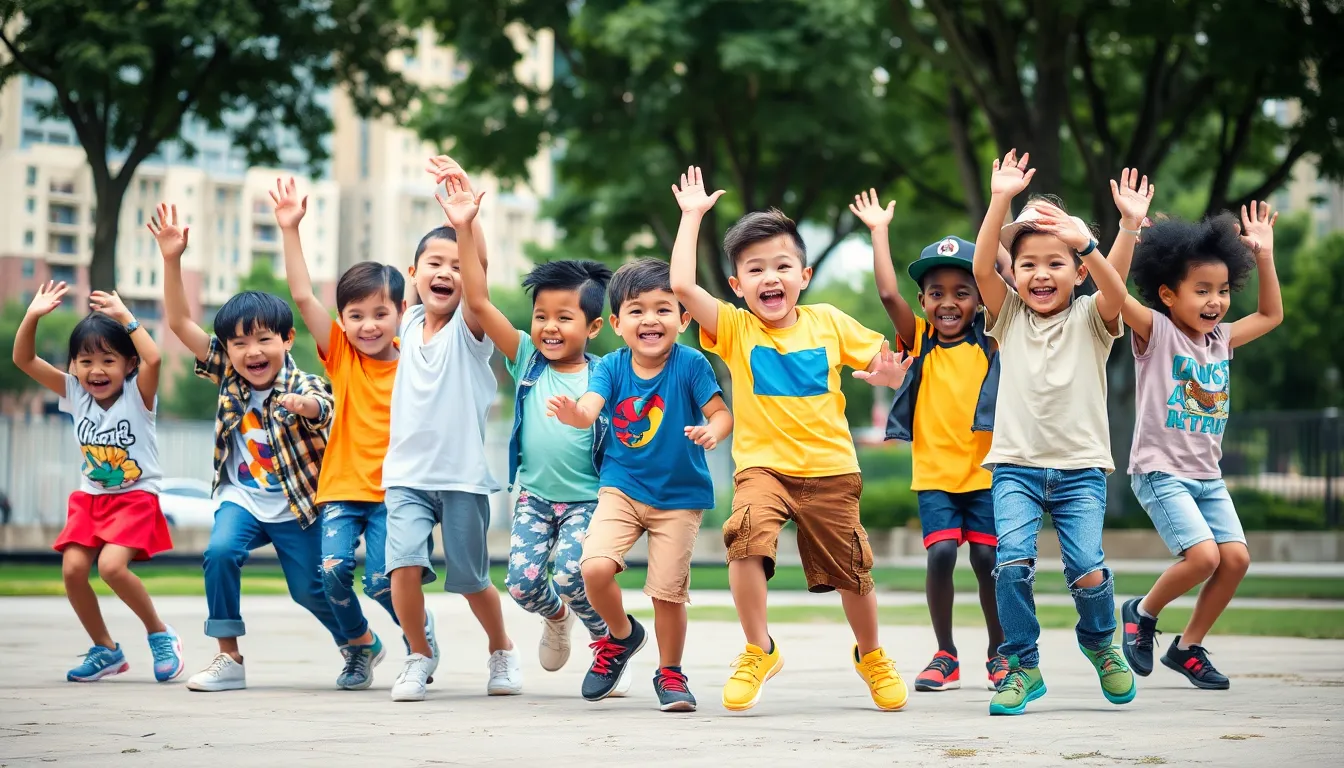Kids hip hop music isn’t just a catchy beat; it’s a vibrant world where rhythm meets imagination. Imagine your little one busting a move in the living room, channeling their inner superstar while spitting rhymes that could make even the coolest adults nod in approval. This genre isn’t just about fun; it’s a powerful tool for creativity and self-expression that can spark joy and confidence in children.
Kids Hip Hop Music
Kids hip hop music represents a dynamic genre tailored for younger audiences. This genre incorporates elements of rap, dance, and rhythmic beats, enabling children to engage with music in a fun and lively manner. With its catchy melodies and relatable themes, kids hip hop encourages creativity and self-expression. Lyrical content often focuses on positive messages such as friendship, teamwork, and perseverance. Artists craft verses that resonate with children’s experiences, making it easier for them to connect with the music. Dance often accompanies the tunes, adding an interactive element that invites kids to move and express themselves physically. Education plays a crucial role in kids hip hop music. Many songs incorporate learning concepts, teaching children about numbers, letters, and social skills. Through engaging beats and rhymes, kids absorb information while having fun. Collaborations between educators and artists enhance this educational aspect, making hip hop a popular tool for both enjoyment and learning. Social connections thrive in the world of kids hip hop. Music brings children together, fostering friendships through dance parties and performances. Young audiences find commonality in shared experiences, strengthening bonds through a love of rhythm and movement. Overall, kids hip hop music transcends mere entertainment. This vibrant genre cultivates confidence, inspires creativity, and promotes social skills among young listeners.The Evolution of Kids Hip Hop Music

Early Influences
Early hip hop music laid the groundwork for kids hip hop, intertwining elements of funk, disco, and soul. In the 1980s, artists like Run-D.M.C. introduced fresh beats and catchy hooks, appealing to a younger audience. Rappers began crafting lyrics that spoke to the experiences of children, focusing on themes like friendship and adventure. From this foundation, educational elements emerged as some artists incorporated numbers and letters into their verses. These captivating lessons helped children engage with music while absorbing essential skills.Modern Trends
Modern kids hip hop showcases diverse styles, with artists innovating to keep up with young listeners’ interests. The rise of digital platforms enables new talents to reach audiences rapidly, leading to richer lyrical content and infectious rhythms. Collaborations between mainstream artists and children’s media creators have become prevalent, enhancing the visibility of kids hip hop. Lyrics often emphasize positivity, self-expression, and teamwork. The integration of dance challenges on social media also invigorates the genre, making it more interactive. As a result, kids feel encouraged to participate, not just listen, transforming hip hop into an engaging educational experience.Benefits of Kids Hip Hop Music
Kids hip hop music offers numerous advantages, emphasizing creative expression and social skills development.Creative Expression
This genre serves as a powerful outlet for children, enabling them to showcase their feelings and ideas. Through rhythm and rhyme, kids articulate their thoughts, building a strong sense of identity. Engaging in hip hop encourages improvisation and originality, sparking new ways of thinking. Participants create their own verses, promoting personal storytelling and imaginative exploration. Dance also plays a significant role, allowing children to express emotions physically through movement. With every beat, kids strengthen their connection to music, enhancing their artistic abilities and confidence.Social Skills Development
Children develop social skills through collaboration and shared experiences in hip hop music. Performances and group dance activities foster teamwork, requiring kids to work harmoniously toward common goals. They learn to communicate effectively, sharing ideas and supporting one another during practices and shows. Social interactions in dance circles cultivate friendships, contributing to a sense of belonging. Furthermore, they gain confidence as they perform in front of peers, increasing comfort in social situations. Engaging in hip hop initiatives helps kids navigate relationships, enhancing their ability to connect with others.Popular Kids Hip Hop Artists
Various artists shape the vibrant landscape of kids hip hop music. They inspire young listeners with catchy beats and relatable lyrics. Here are some notable figures in the genre:-
- Kidz Bop: This group reimagines popular songs, allowing kids to enjoy familiar hits with kid-friendly lyrics. Their energetic performances captivate audiences of all ages.
-
- Landon Cube: Known for his catchy tracks and youthful appeal, he connects with children through positive messages and engaging melodies.
-
- Yung Gravy: His fun, humorous lyrics resonate with kids, making his music a favorite at dance parties. His playful style encourages children to embrace their creativity.
-
- Jack Harlow: With an upbeat sound and relatable themes, he draws in a younger audience. Harlow’s engaging performances inspire kids to express themselves.
-
- Lil’ Fresh: Emerging as a favorite among younger listeners, he creates songs that resonate with kids. His focus on friendship and fun themes makes his tracks popular in schools.
-
- Tones and I: Known for her hit “Dance Monkey,” she captures children’s attention with danceable rhythms. Kids enjoy her unique sound and uplifting messages.
-
- Sean Kingston: His catchy tracks blend reggae and hip hop influences. Kid-friendly themes help him maintain his popularity among young audiences.



